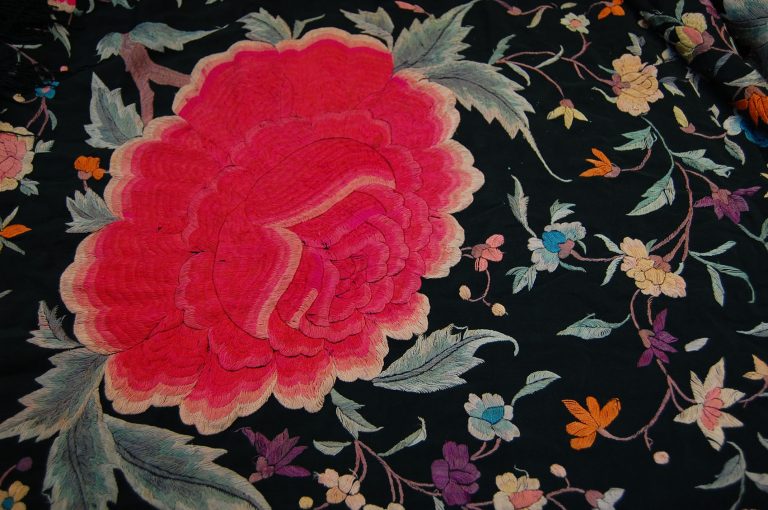The Philippine islands, colonized by Spain in the 16th century, was an obligatory port of call for galleons loaded with precious cargoes of Oriental products, which came via Mexico to dock at Seville’s port. Known as the galleon trade, these galleons brought goods from China to Europe through the Philippines. One of these in-demand items were embroidered silk shawls from China which were to become known in Europe as the mantones de Manila. These are silk shawls with intricate embroidered motifs such as flowers, symbolic icons, and animals.
The daintiness and bright embroidery of the Chinese-made shawls captivated the imagination of Sevillians from all walks of life, to the point where the Manila silk shawl gave protection from the cold to both workers at the tobacco factory (the legendary Carmen, among them) and ladies of the aristocracy alike. The women of Seville made the Manila silk shawl their own from the very moment this Chinese complement was first imported. These mantones were adopted and adapted by Spain as part of their fashion and national costumes for dance and music.
Draped in Silk features not only antique and contemporary mantones de Manila, but also examples of Philippine embroidery from Tesoro’s Philippine Handicrafts and reinterpretations of the manton from the following designers, artists, and creatives:
- Paz Abad Santos
- Ambie Abaño
- Amina Aranaz-Alunan
- Marina Cruz
- Araceli Dans
- Steve De Leon
- Dopy Doplon
- Margarita Forés
- Danilo Franco
- Jeannie Goulbourn
- Katrina Goulbourn-Feist
- Dan Lichauco
- Tats Rejante-Manahan
- Maxine Syjuco
- Michelline Syjuco
- George Tapan
- Wig Tysmans
- Ann Wizer
